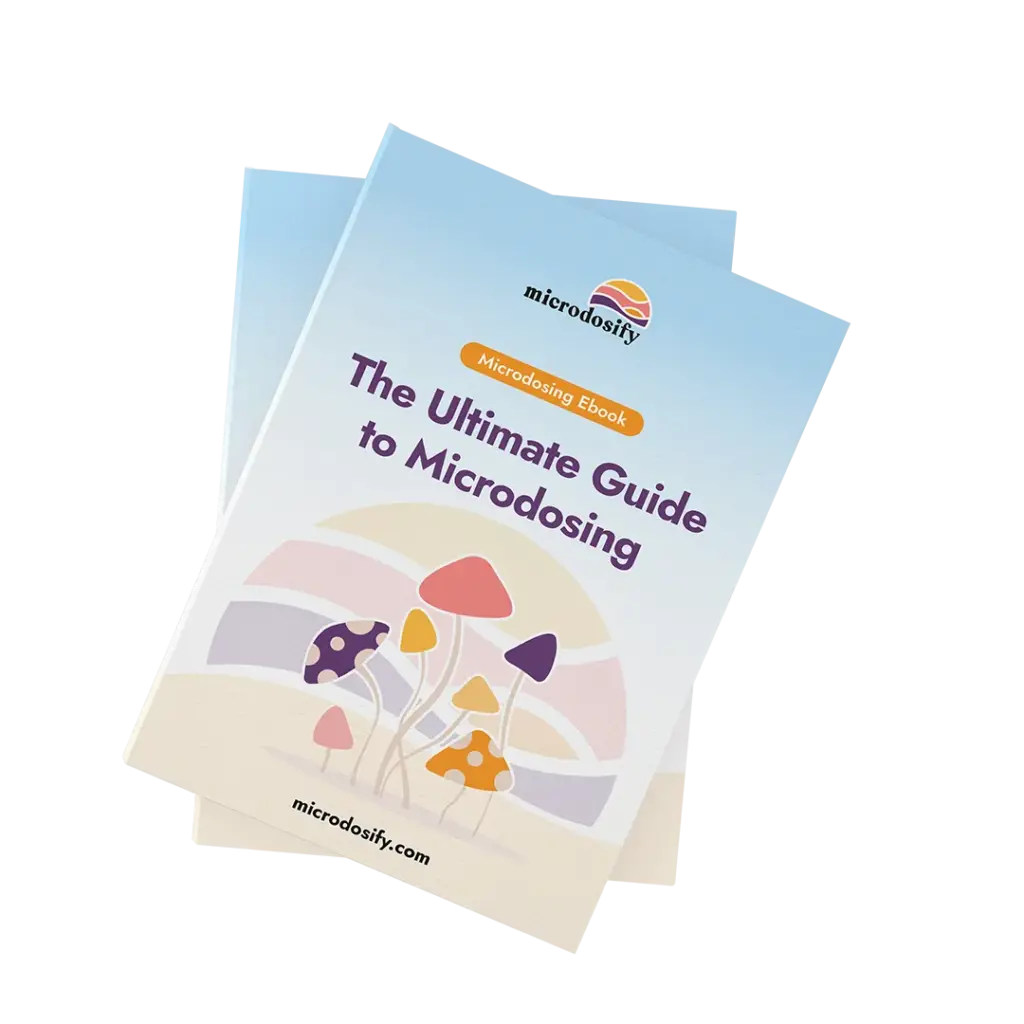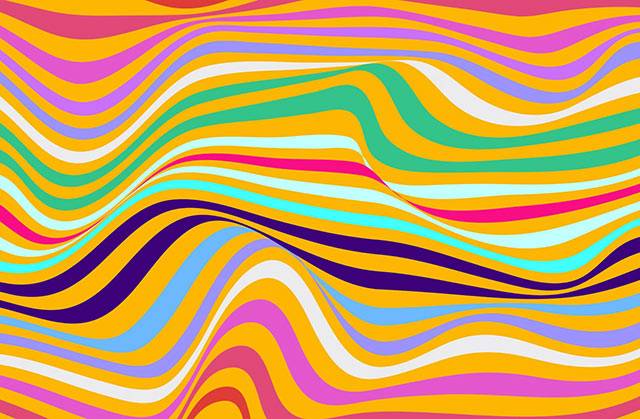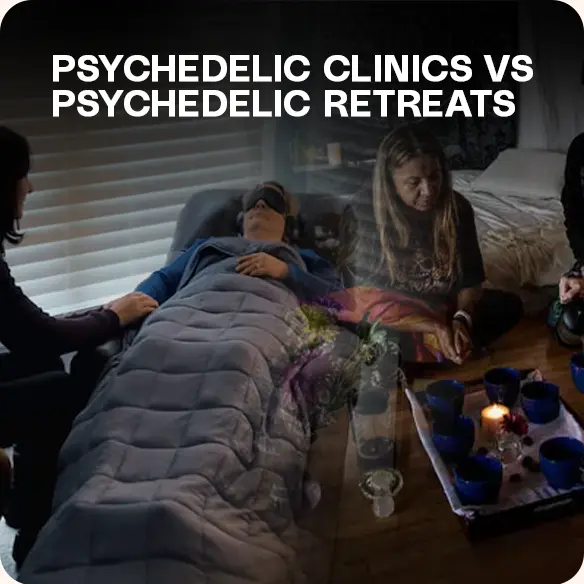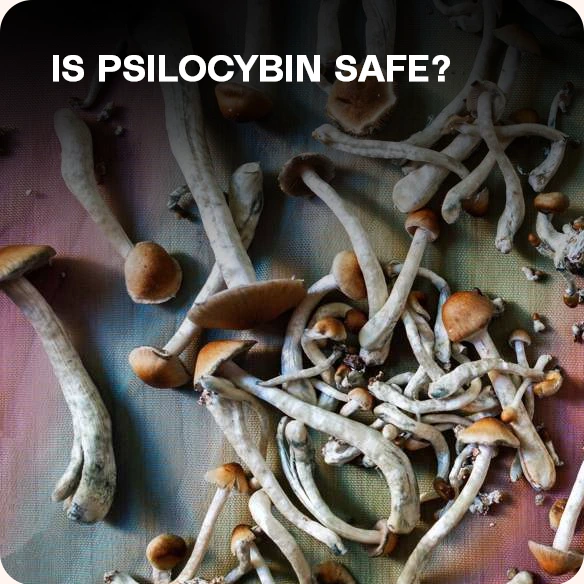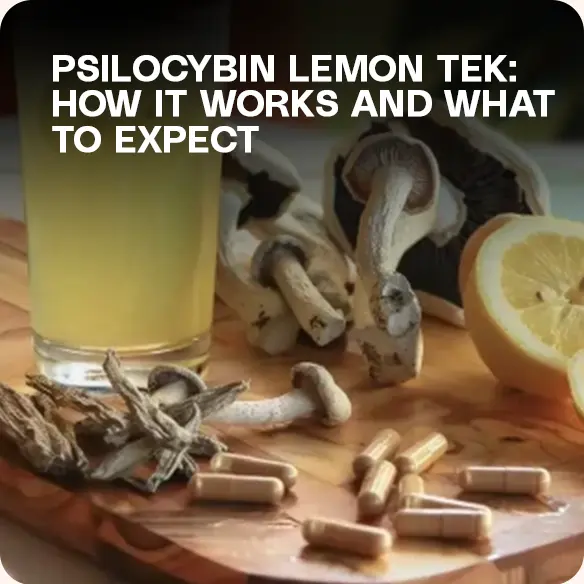Microdosing is the practice of taking very small doses of psychedelic supplement, typically 1/10 to 1/20 of a recreational dose, to improve focus, creativity, and mood without hallucinations, balancing potential benefits with essential safety considerations.
In this guide, you’ll learn:
- What microdosing is and how it works.
- The most common substances used for microdosing.
- Popular dosing protocols such as the Fadiman and Stamets methods.
- The top-reported benefits, supported by both research and anecdotal evidence.
- Potential side effects and harm reduction strategies.
- Where future research is headed and how to approach microdosing responsibly
Microdosing has gained significant attention in recent years, with thousands of individuals reporting improved productivity, mental health, enhanced creativity, and greater well-being.
While many claim it may help with conditions such as depression and anxiety, the scientific evidence is still emerging.
Much of today’s understanding is based on anecdotal reports, and ongoing research aims to clarify better the actual effects, risks, and long-term safety of this practice.
What does it mean to microdose?
Microdosing is the practice of taking small amounts of psychedelic mushrooms such as Golden Teacher, aiming for subtle shifts in perception, rather than hallucinations.
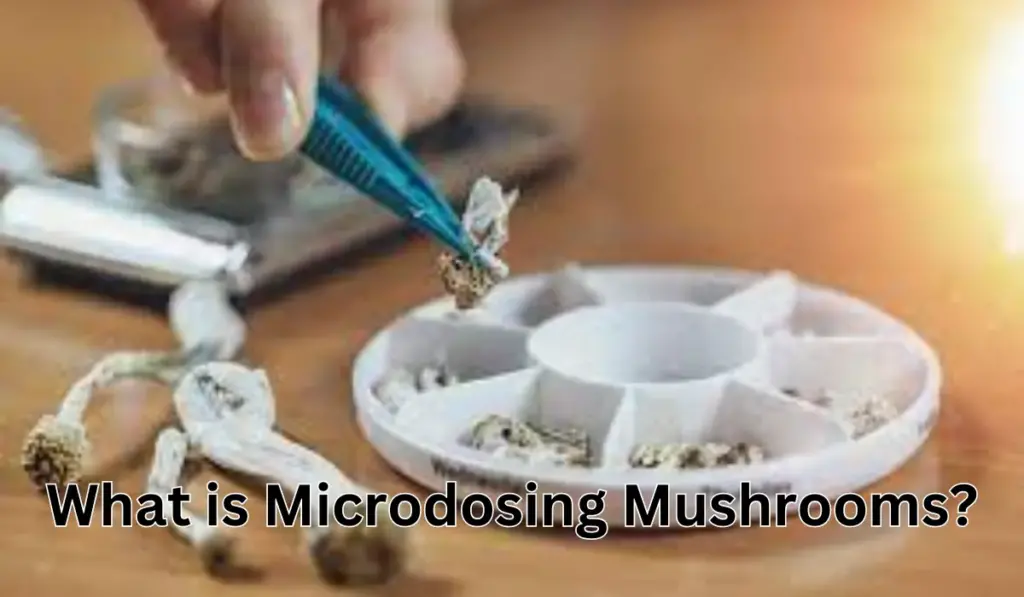
Many people feel that microdosing has given them life changing benefits; however the science is still in its infancy with mixed results from studies.
For most people, a microdose will fall between the range of 50mg – 250mg of dried psilocybin mushrooms. These are considered low doses compared to recreational use.
An active dose for microdosing is a small fraction of a typical recreational dose, intended to produce sub-perceptual effects without intoxication.
The dose that is best for each person will vary based on their intention and is often referred to as their sweet spot. To see what dose might be best for you, check out our guide here.
To get the most benefit, many people prefer to microdose every few days for a period of 4-6 weeks before taking a small break.
The most common schedules for microdosing are referred to as protocols, which include designated dosing days separated by non-dosing days.
The subjective effects of microdosing are subtle and often self-reported, with most people describing only minor changes in mood, cognition, or perception.
Some individuals also microdose in an attempt to manage conditions like cluster headaches, though scientific evidence supporting this practice is limited.
What Substances Are Used in Microdosing?
The most popular psychedelics used for microdosing are LSD and psilocybin mushrooms. A psilocybin microdose, in particular, is often associated with positive effects on mood and cognitive function, according to anecdotal reports.

LSD and psilocybin are favored because they are well-studied among psychedelic supplement, and users often report enhanced creativity, improved mood, and increased focus when taking small doses.
Other substances, such as ayahuasca and mescaline, are sometimes used for microdosing, but these are less common and less researched.
It’s important to recognize that much of the information about the effects of these substances comes from personal experiences rather than scientific evidence.
Individuals with pre-existing mental health conditions, such as bipolar disorder, should be especially cautious, as the risks associated with microdosing can be higher for them.
As research continues, scientists hope to better understand the full range of effects and potential risks of microdosing with different substances.
What is a Microdosing Protocol?
A microdosing protocol refers to a structured schedule that guides how frequently to take your microdose.

These protocols help balance the potential benefits of microdosing with the need to minimize tolerance buildup and side effects.
It’s important to avoid microdosing every day, as many experts believe that tolerance to microdosing mushrooms can develop, and the long-term impact of daily psilocybin use remains unknown.
Two of the most well-known microdosing protocols are the Fadiman Protocol and the Stamets Protocol:
The Fadiman Protocol
Named after James Fadiman, this protocol involves microdosing every third day—taking a dose on day one, followed by two days off.
This schedule is often recommended for beginners because it allows for clear comparison between dosing and non-dosing days and is easy to track.
The Stamets Protocol
Developed by mycologist Paul Stamets, this protocol consists of microdosing for four consecutive days followed by three days off.
It also suggests combining psilocybin mushrooms with supplements like Lion’s Mane mushroom and Niacin (vitamin B3), which are believed to promote neurogenesis and neuroplasticity.
Niacin is included to help enhance the delivery of mushroom compounds throughout the body.
Both protocols aim to prevent tolerance buildup and maintain the effectiveness of microdosing over time.
However, protocols aren’t one-size-fits-all; many people experiment with different schedules or combine microdosing with functional nootropics.
For example, blends like our Create Microdosing Capsules are crafted to support creativity and innovation, aligning with protocols like Stamets’ that emphasize neuroplasticity.
Approaching microdosing with careful attention to dosing schedules and self-awareness is essential to maximize benefits and reduce risks, especially given the subtle and individualized nature of microdosing effects.
Want to learn more? Check out our ultimate guide to microdosing protocols here.
What does Microdosing Magic Mushrooms feel like?
Microdosing magic mushrooms produces subtle effects often described as “having a really good day.”
The experience is distinctly milder than taking high doses of mushrooms. Common effects reported by users include:
- Slightly uplifting mood.
- A world perception that feels unchanged but noticeably brighter.
- Increased awareness of surroundings.
- A slowed perception of time that enhances present-moment focus.
- Sharper and clearer cognitive function.
Additionally, many users report a reduction in mind wandering and a measurable increase in mental focus during microdosing sessions.
Why Microdose Psychedelic Mushrooms?
Microdosing psychedelic mushrooms offers several key benefits, including enhanced productuvity, creativity, improved mental health, and overall well-being.
People microdose to boost mood, increase focus, and support symptoms of depression and anxiety. Scientists are actively researching these potential benefits to provide clearer evidence.
Top reasons individuals choose to microdose psychedelics include:
- Enhancing creativity and innovative thinking
- Improving cognitive function and mental clarity
- Supporting emotional balance and reducing symptoms of depression and anxiety
- Increasing focus and productivity
- Promoting mindfulness and self-awareness
- Facilitating personal growth through shifts in perspective
- Assisting in breaking addictive habits
- Reducing stress and improving overall well-being
While anecdotal evidence is strong, more clinical trials and scientific studies are needed to confirm these benefits and understand the safety of microdosing.
Adopting harm reduction strategies and consulting healthcare professionals is recommended for those considering microdosing, especially individuals with mental health disorders.
What are the 8 Benefits of Microdosing Psychedelics?
The most reported benefits of microdosing psychedelics include improved mental health, enhanced brain function, increased creativity, improved focus, support for shifting habits, mindfulness, personal growth, and improved well-being.
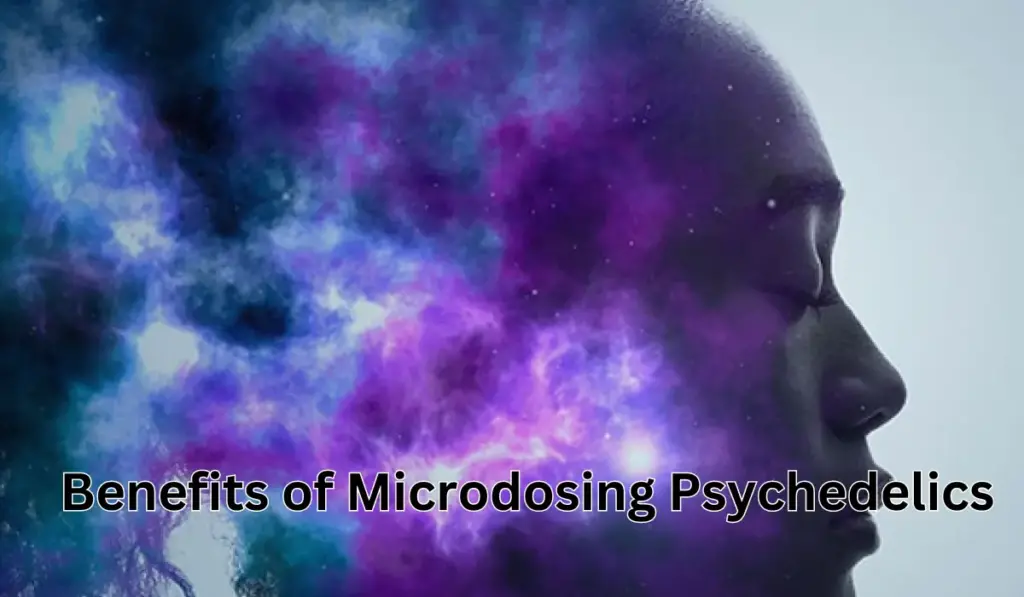
Some studies suggest microdosing may provide significant benefit for mental health, though findings are mixed.
Recent investigations, such as those by lea t, anderson t, and van elk, have explored the effects of microdosing on cognition, mood, and brain activity.
In the context of brain function, some studies use resting state EEG to assess changes in brain activity during microdosing.
When it comes to improved mental health, the effects of microdosing on depression compared to other interventions remain inconclusive, with some studies reporting minimal impact.
While anecdotal reports are common, there is currently no strong evidence from placebo-controlled trials to support all claimed benefits.
The importance of systematic study is emphasized to validate these anecdotal findings.
1. Improved Mental Health
- A study published on nature.com in 2021 suggests that microdosers report lower levels of anxiety and depression than non-microdosers.
- Many people are turning to microdosing as an alternative to traditional pharmaceuticals such as SSRIs
- If you’re considering transitioning off SSRIs, it’s essential to do so under the guidance of a qualified, psychedelic-informed professional. For tailored support, we recommend exploring the Microdosify Coaching Program.
2. Enhanced Brain Functioning
- Microdosers often report improved cognitive abilities including the ability to solve problems with more ease.
- A preliminary study on microdose.me on those that combined their mushroom microdose with Lion’s Mane and Niacin did show that those in older age groups had small, but measurable improvements to their cognition.
3. Increased Creativity
- Many microdosers claim a boost in creativity and access to novel ideas.
- This may include an enhanced ability to think outside the box and foster innovative thinking.
4. Improved Focus and Concentration
- Microdosing may help individuals maintain focus, increasing productivity and reducing distractibility.
- Preliminary results from a study out of Maastricht University in the Netherlands suggest that microdosing may be especially supportive in improving focus in those with ADHD.
5. Support for Quitting Addictive Habits
- Anecdotal reports suggest that microdosing may assist in overcoming habits such as smoking or excessive alcohol consumption.
- Studies from the 1950’s showed the high doses of psychedelics may be effective in supporting those with addiction. To date, no studies have been done on microdosing and addiction.
6. Mindfulness and Self-Reflection
- Microdosing may facilitate an enhanced sense of mindfulness and self-awareness.
- This can provide a potential for deeper introspection and reflection.
7. Shifts in Perspective Leading to Personal Growth
- Microdosing may trigger a shift in mindset and perspective, allowing individuals to reevaluate their values and priorities.
- In turn, this may provide strong potential for personal growth, leading to a more meaningful and fulfilling life.
8. Improved Well-Being:
- Many microdosers report reduced stress and an easier ability to go with the flow as outcomes of their practice
- This can lead to a greater sense of optimism and appreciation of life.
It’s important to note that many of the commonly stated benefits of microdosing psychedelics are based on anecdotal evidence or personal reports from individuals.
Further scientific research utilizing placebo-controlled designs is crucial for validating these claims and understanding the full potential of microdosing.
What are the Side Effects of Microdosing Mushrooms?
Microdosing mushrooms can have side effects including headaches, stomach discomfort, insomnia, increased anxiety, and increased heightened emotional states.
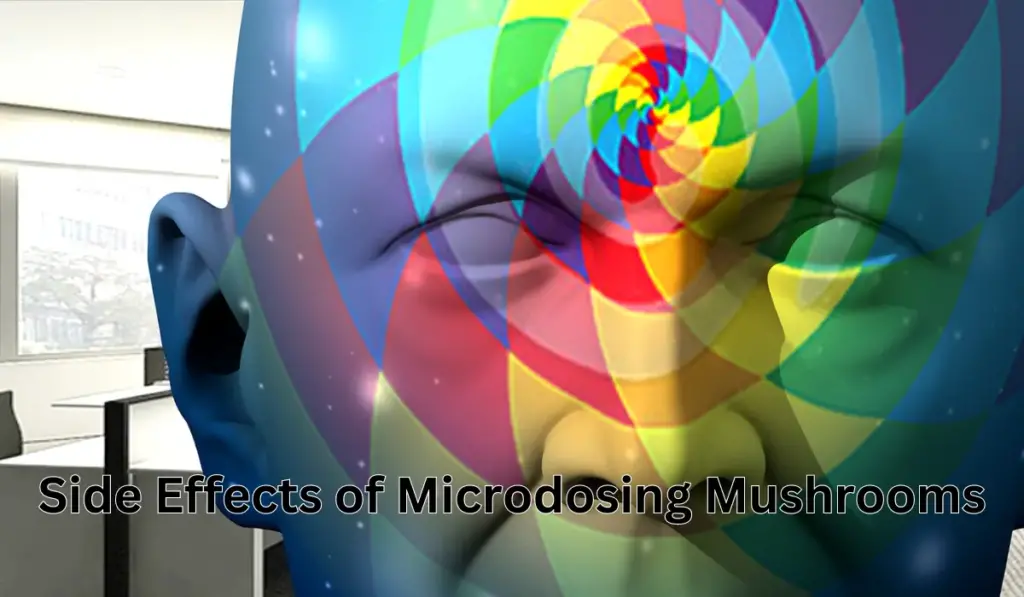
Some people with pre-existing mental health conditions such as paranoia or who have experienced psychosis should not microdose. We have outlined these risks below:
Current drug policy creates additional challenges for regulation, safety, and research on microdosing, making it harder to ensure standardized practices and consumer protection.
1. Physical Effects
- Headaches: Some individuals experience headaches, which can range from mild to more severe discomfort.
- Stomach issues: Digestive disturbances such as nausea, stomachache, or gastrointestinal discomfort have been reported by some microdosers.
- Insomnia: Difficulty falling asleep or disturbances in sleep patterns can occur.
- Increased heart rate and blood pressure: Stimulating effects of psychedelics can lead to temporary increases in heart rate and blood pressure.
2. Psychological Effects
- Anxiety and increased stress: Microdosing may lead to heightened anxiety or increased stress levels in some individuals, especially those predisposed to anxiety disorders.
- Worsened mood: While some people report mood enhancement, others may experience negative shifts in mood, including feelings of sadness, irritability, or emotional instability.
- Cognitive disturbances: Some individuals may experience difficulties with concentration, focus, or memory while microdosing.
- Uncomfortable sensations or feelings: Sensory perceptions may be altered in ways that individuals find uncomfortable or disorienting.
3. Risk of Psychiatric Symptoms
- Panic attacks: Some individuals may experience intense panic or anxiety attacks while under the influence of microdoses.
- Paranoia: Microdosing can amplify existing feelings of paranoia or induce paranoid thoughts in individuals who are prone to them. Microdosing is not recommended to those prone to paranoia.
- Psychotic episodes: For individuals with a history of psychotic disorders or a predisposition to psychosis, microdosing can potentially trigger or worsen psychotic symptoms. Microdosing is not recommended for those with a personal or family history of psychosis or schizophrenia.
It is important to note that these side effects can vary widely among individuals, and some people may not experience any negative effects while microdosing.
Oftentimes, these side effects are reduced completely by taking a lower dose. However, the risks associated with microdosing should not be underestimated, particularly for those with pre-existing mental health conditions.
What Are Harm Reduction Strategies for Microdosing?
When considering microdosing, harm reduction strategies are essential to ensure safety and minimize potential risks. Key recommendations include:
- Start with very small doses and increase gradually only if needed, paying close attention to how your body and mind respond.
- Avoid microdosing if you are feeling unwell, anxious, or depressed, as these states can be intensified by psychedelic supplement.
- Individuals with a history of mental illness, such as depression or bipolar disorder, should consult with a healthcare professional before trying microdosing, as the risks may outweigh the benefits.
- Reports in harm reduction journals and systematic studies emphasize the importance of caution, especially for those new to psychedelics.
- Prioritize safety, education, and self-awareness to reduce the likelihood of negative outcomes and make more informed decisions about microdosing.
What is the Future Research Directions of Microdosing Psychedelics?
As interest in microdosing continues to grow, future research should focus on:
- Conducting more clinical trials and systematic studies to better understand its effects on mental health and cognitive function.
- Encouraging organizations like the National Institutes of Health to support research investigating both the potential benefits and risks of microdosing for mental health disorders.
- Distinguishing between anecdotal reports and strong scientific evidence, as highlighted by media outlets such as the New York Times.
- Studying long-term microdosing effects and the impact of different substances and dosing regimens in greater depth.
- Prioritizing rigorous research to provide clearer guidance on the safety, efficacy, and best practices for microdosing.
- Helping individuals make informed choices about their mental health and well-being through evidence-based information.
Final Thoughts
In summary, microdosing involves taking tiny amounts of psychedelics with the intention of supporting mental and emotional well-being, without experiencing traditional psychedelic effects such as hallucinations or distorted reality.
Its reported benefits have put it in the spotlight as a potential well-being tool, and include improved focus, creativity, and mood regulation.
While research is still in its early stages, microdosing shows promise in facilitating neuroplasticity and assisting individuals with conditions like depression and anxiety.
However, caution, dosage accuracy, and reliable sourcing are crucial. Consulting with professionals is advised, especially for those who have or are predisposed to certain conditions such as paranoia.
Further research is needed to understand its mechanisms, long-term effects, and risks.
Responsible use, education, and scientific inquiry are essential for maximizing the potential benefits of microdosing and integrating it safely into society.
Sources:
- Three Cases of Reported Improvement in Microsmia and Anosmia Following Naturalistic Use of Psilocybin and LSD by (August 2023) Alexsandra Kovacevich, Jeremy Weleff, Benjamin Claytor & Brian S. Barnett
- Psychedelic Microdosing: What Is It Good For? by (September 2023) Anya K. Bershad
- Stability of psilocybin and its four analogs in the biomass of the psychotropic mushroom Psilocybe cubensis by (February 2021) Klára Gotvaldová, Kateřina Hájková, Jan Borovička, Radek Jurok, Petra Cihlářová, Martin Kuchař
- Magic Mushroom Use: A Qualitative Interview Study of Post-Trip Impacts and Strategies for Optimizing Experiences by (January 2022) Lindsay Shaw, Kerri Rea, Nathan J. Lachowsky & Eric Abella Roth
- Risks and benefits of psilocybin use in people with bipolar disorder: An international web-based survey on experiences of ‘magic mushroom’ consumption by (December 2022) Emma Morton, Kimberly Sakai, Amir Ashtari, M. Pleet, E. Michalak, J. Woolley
- Risks and benefits of microdosing psychedelics in people with mental health concerns: An international web-based survey on experiences of microdosing” (November 2021) Rootman, Kryskow, Harvey, Stamets, Santos-Brault, Kuypers, Polito, Bourzat & Walsh
Frequently Asked Questions (FAQs)
1. What is microdosing?
Microdosing is the practice of taking very small amounts of psychedelic substances, such as LSD or psilocybin mushrooms, typically around 1/10 to 1/20 of a recreational dose. The goal is to experience subtle benefits like improved mood, creativity, and focus without the intense effects or hallucinations associated with higher doses.
2. Is there a recognized definition of microdosing?
Currently, there is no single, universally accepted scientific definition of microdosing. It generally refers to taking doses too low to cause significant intoxication or perceptual changes, but specific dose ranges can vary depending on the substance and individual.
3. What substances are commonly used for microdosing?
The most common substances used for microdosing are psychedelic supplement like lysergic acid diethylamide (LSD) and psilocybin mushrooms (magic mushrooms). Other substances like ayahuasca, mescaline, and ketamine are less commonly used.
4. What are the potential benefits of microdosing?
People microdose for various reasons, including improved mental health, enhanced creativity, better focus, and increased well-being. While anecdotal reports and some scientific studies suggest potential benefits, more research and clinical trials are needed to confirm these effects.
5. Are there risks associated with microdosing?
Yes, microdosing can have side effects such as headaches, anxiety, insomnia, and mood changes. It may also pose higher risks for individuals with mental health disorders like bipolar disorder or psychosis. Ensuring harm reduction strategies and consulting healthcare professionals is important.
6. How often do people microdose?
Common microdosing protocols include dosing every third day (Fadiman Protocol) or four days on followed by three days off (Stamets Protocol). The frequency can vary based on personal preference and tolerance.
7. Is microdosing safe?
While microdosing is generally considered to have a low risk of severe adverse effects, its long-term safety remains unclear due to limited scientific research. It is important to approach microdosing cautiously and with informed guidance.
8. Does microdosing cause a placebo effect?
The expectancy effect, a form of placebo effect, plays a significant role in perceived benefits. Some studies show that improvements reported by microdosers may be influenced by their expectations rather than the drug itself.
9. Is microdosing legal?
Most psychedelic substances used for microdosing are illegal under federal law in many countries. However, some states and cities have decriminalized or legalized certain psychedelics for medical or personal use. Legal status varies widely by location.
10. Where can I find more scientific reports on microdosing?
Scientific reports and systematic studies on microdosing are increasingly published in international journals and by research institutions. Staying updated with reputable sources and clinical trial registries can provide the latest information.
If you have more questions or want to learn about harm reduction and protocols, consult healthcare professionals or trusted educational resources.
